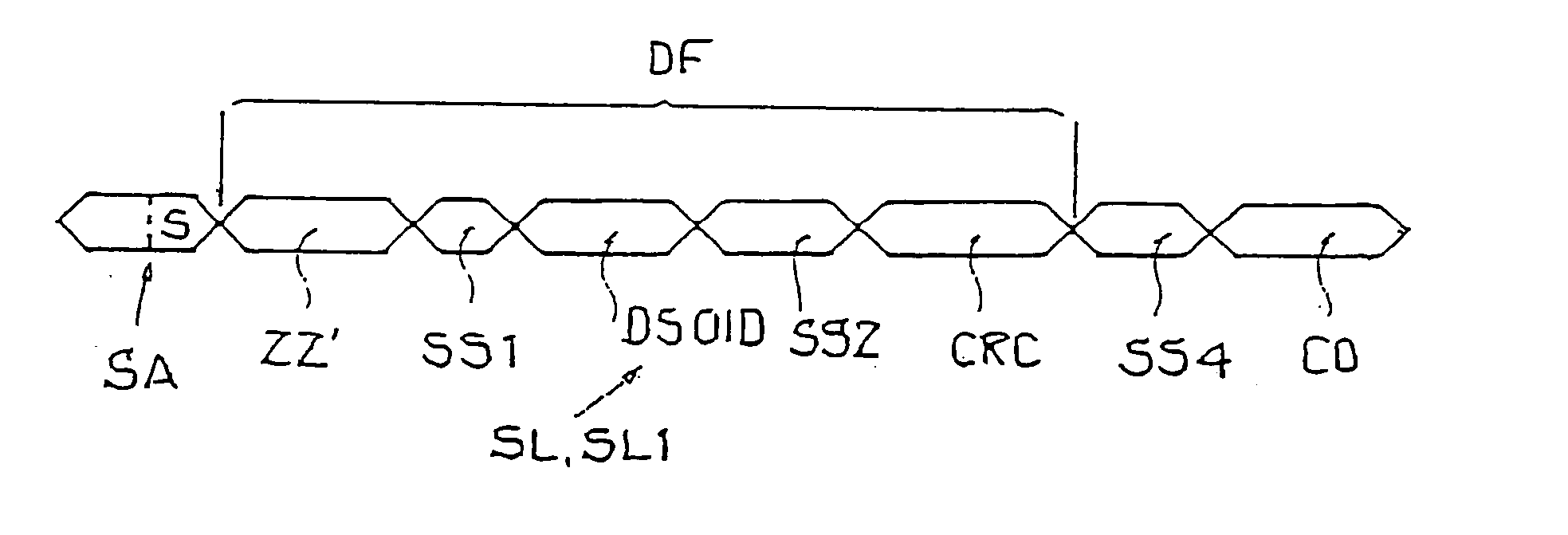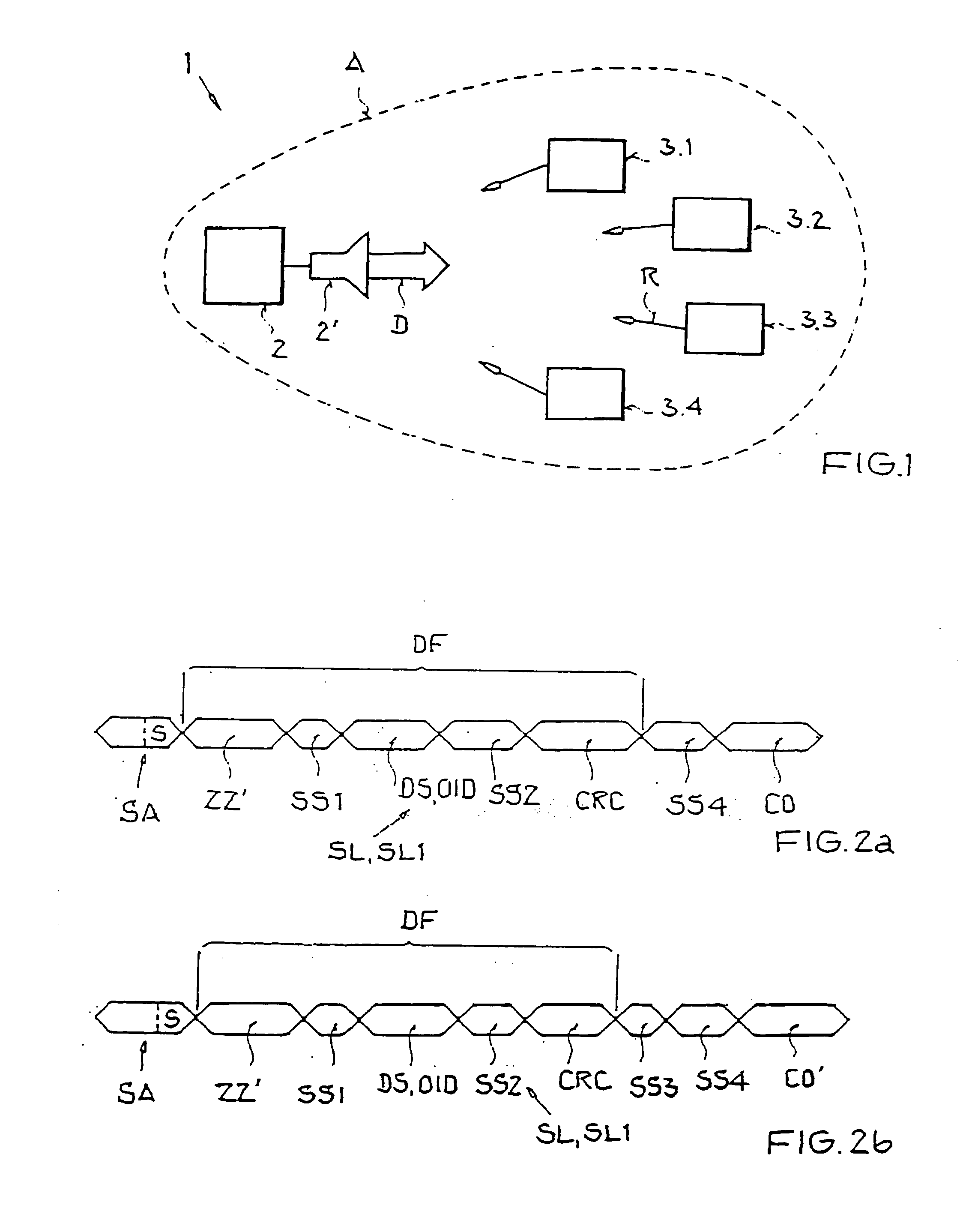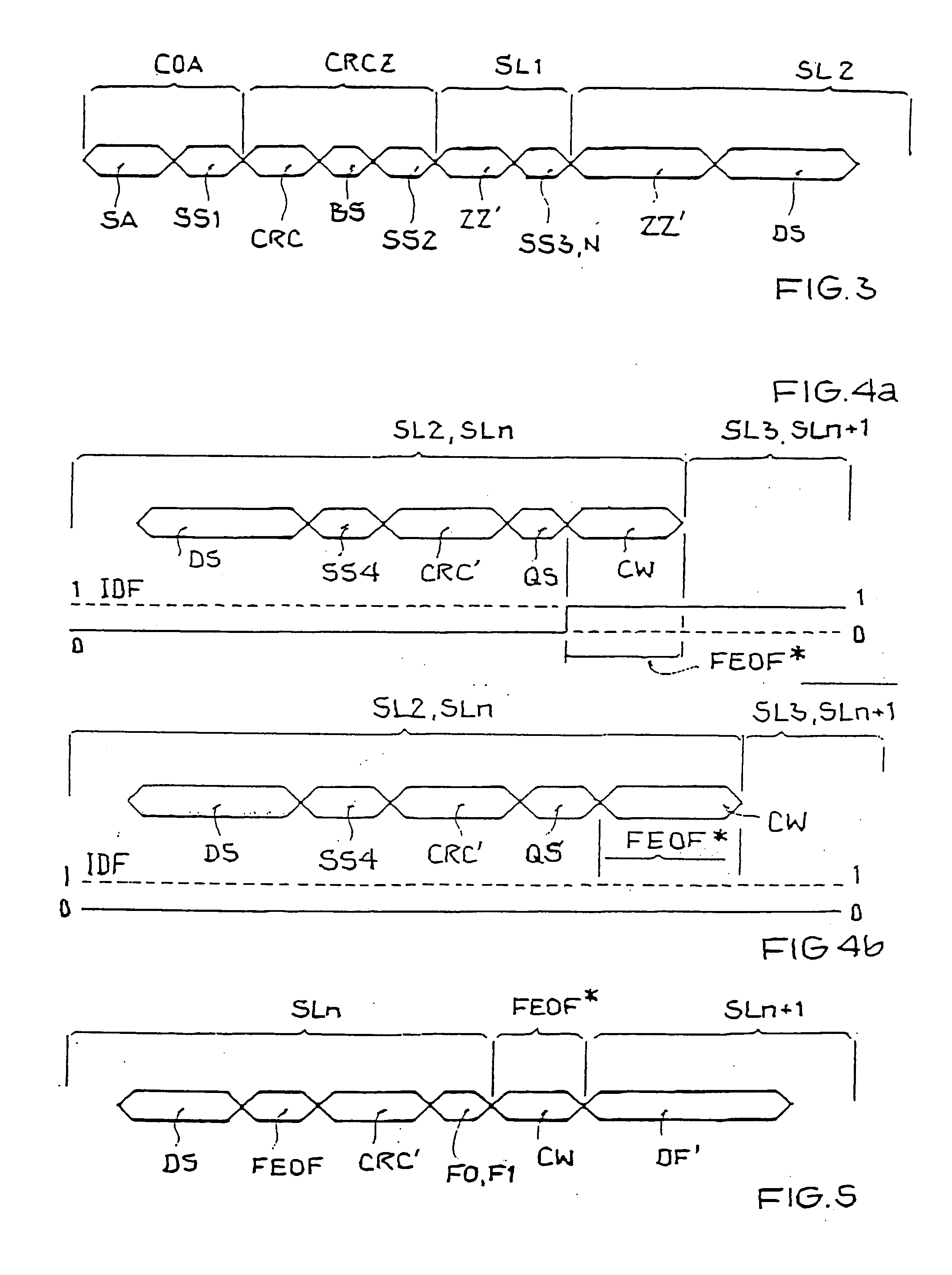Communication method in RFID or remote sensor systems
a communication method and sensor technology, applied in the direction of burglar alarm mechanical actuation, burglar alarm by hand-portable objects removal, instruments, etc., can solve the problems of affecting the reception of the control unit, affecting the reliability of the transponder, and affecting the accuracy of the transponder
- Summary
- Abstract
- Description
- Claims
- Application Information
AI Technical Summary
Benefits of technology
Problems solved by technology
Method used
Image
Examples
Embodiment Construction
[0046]FIG. 1 shows an RFID system 1 with a control unit in the form of a reader 2 (base station) in connection with suitable transmitting and receiving means 2′, such as a dipole antenna, and a number of remote units (transponders 3.1-3.4), which are all located in a response area A of the reader 2.
[0047] In this situation, a data stream D transmitted by the reader 2 or the transmitting means 2′ is received simultaneously by all transponders 3.1-3.4. The data transmission from the reader 2 to a transponder 3.1-3.4 is referred to below as forward link. The transponders 3.1-3.4 reply at least to a completed data transmission from the reader 2 through return links R, wherein a part of the energy received together with the data D at the transponder 3.1-3.4 is reflected (backscattered) and may be modulated for data transmission from the transponders 3.1-3.4 to the reader 2. When full-duplex-capable systems 1 are used in accordance with a preferred first embodiment of the inventive metho...
PUM
 Login to View More
Login to View More Abstract
Description
Claims
Application Information
 Login to View More
Login to View More - R&D
- Intellectual Property
- Life Sciences
- Materials
- Tech Scout
- Unparalleled Data Quality
- Higher Quality Content
- 60% Fewer Hallucinations
Browse by: Latest US Patents, China's latest patents, Technical Efficacy Thesaurus, Application Domain, Technology Topic, Popular Technical Reports.
© 2025 PatSnap. All rights reserved.Legal|Privacy policy|Modern Slavery Act Transparency Statement|Sitemap|About US| Contact US: help@patsnap.com



